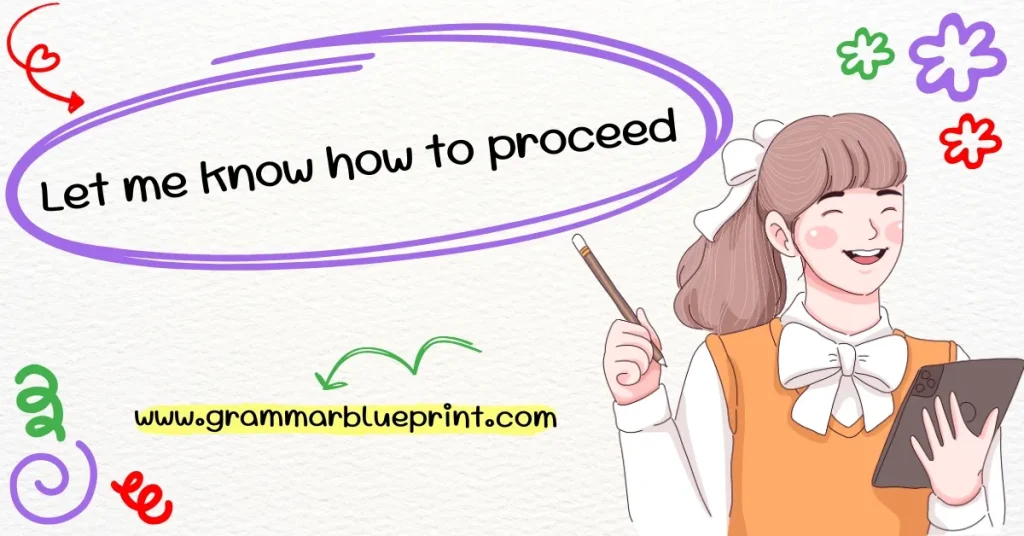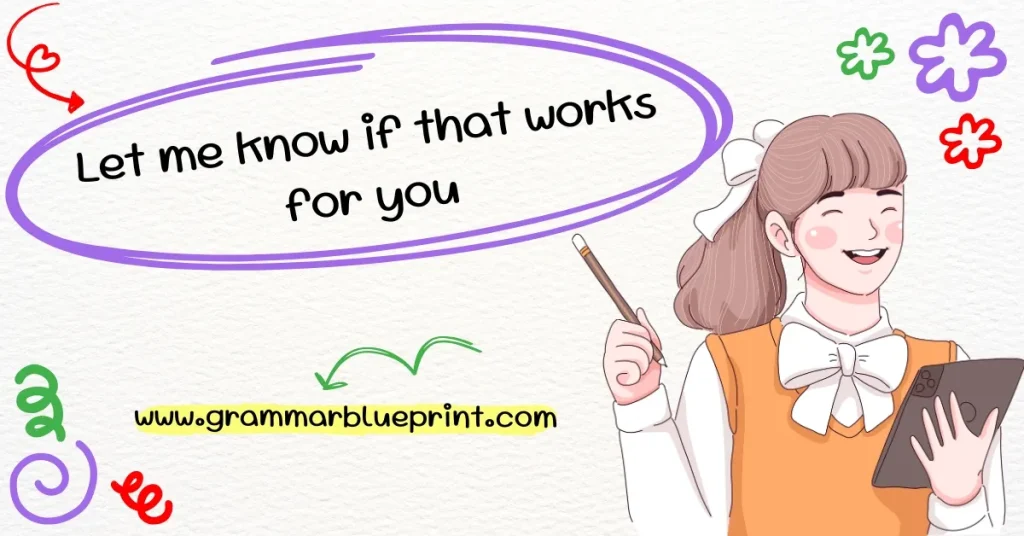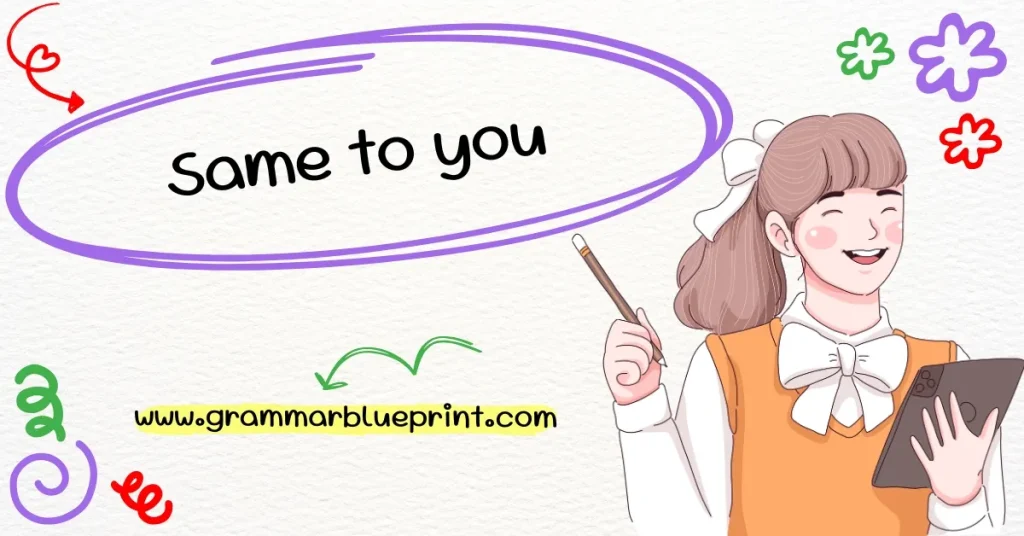“Let me know how to proceed” is a common phrase used in both professional and casual conversations. Whether you’re emailing a colleague, speaking to a supervisor, or reaching out for advice, this simple phrase plays a pivotal role in maintaining smooth and clear communication. It’s often used when you’re unsure about the next step in a situation and need someone’s input. But how exactly do you use it, and what are the alternatives? This article will break down everything you need to know about this phrase, its use, and some helpful alternatives.
What Does “Let Me Know How to Proceed” Mean?
The phrase “Let me know how to proceed” is a request for direction. It typically signals that you are ready to continue with a task or project but need some form of guidance on how to move forward. It can be used in both formal and informal contexts, depending on the situation.
In professional settings, it indicates that you are open to receiving further instructions and are looking for clarity on what to do next. In more casual contexts, it might express a similar willingness to continue, but in a less formal tone. Essentially, it’s a polite way of asking, “What should I do now?” or “How would you like me to continue?”
When to Use “Let Me Know How to Proceed”
The phrase “Let me know how to proceed” is particularly useful in professional settings, such as business emails, meetings, and customer service interactions. It conveys respect for the other person’s expertise or authority and signals that you are awaiting their advice before taking action. You can use it in various situations, including:
- Business Emails: When you’ve completed a task but need confirmation on the next steps.
- Meetings: When discussing project timelines or seeking clarification on tasks.
- Customer Service: If a customer requests an action, and you want to ask how to handle their query.
How you use it can vary depending on the formality of the situation. In a more formal setting, you might say, “Please let me know how I should proceed.” For informal communication, it could be as simple as, “Just let me know what to do next!”
Benefits of Using “Let Me Know How to Proceed”
Using “Let me know how to proceed” comes with several benefits. First and foremost, it creates clarity in communication. This phrase ensures that both parties are on the same page regarding what needs to be done next. By asking for guidance, you signal that you’re open to direction and willing to collaborate on the next steps.
Furthermore, using this phrase helps establish a tone of professionalism and openness. It shows that you are considerate of the other person’s expertise and that you value their input. Whether in a work environment or a casual conversation, this simple phrase can make a big difference in maintaining smooth and respectful communication.
How to Use “Let Me Know How to Proceed” Effectively
While the phrase “Let me know how to proceed” is straightforward, it’s important to use it correctly to ensure it aligns with the tone and context of your communication.
Key Tips for Effective Use:
- Be clear about the context: Specify what the next steps are for so the recipient understands exactly what kind of advice you are asking for.
- Use appropriate tone: Adjust your tone based on the formality of the situation. In a business setting, maintain a professional tone. In casual conversations, you can be more relaxed but still polite.
- Use it as a follow-up phrase: It’s often effective as a follow-up after a request or a task that’s been completed. For example, after submitting a report, you might write, “I’ve finished the report, let me know how to proceed.”
Examples:
- In an email to a boss: “I’ve completed the draft for the presentation. Please let me know how I should proceed with the next steps.”
- In a casual conversation: “I’ve got all the ingredients for dinner—just let me know how you want me to proceed.”
- In a customer service situation: “I’ve reviewed your request. Let me know how you’d like me to proceed with resolving this issue.”
By following these tips, you can ensure that the phrase is used effectively, enhancing both clarity and collaboration.
Common Mistakes to Avoid with “Let Me Know How to Proceed”
While “Let me know how to proceed” is a helpful phrase, there are a few common mistakes that can undermine its effectiveness.
- Overuse in casual settings: Using this phrase too often in informal situations can come off as robotic or overly formal. It’s fine for professional communication but try not to use it excessively in friendly or casual conversations.
- Incorrect punctuation and structure: A minor grammatical mistake can make the phrase sound less polished. Ensure proper punctuation to maintain professionalism, such as using a period at the end of the sentence.
- Confusing tone: It’s important to maintain clarity and politeness when using this phrase. If it’s not worded carefully, it might sound too passive or uncertain. Make sure your tone matches the situation.
Better Alternatives to Say “Let Me Know How to Proceed”
While “Let me know how to proceed” is useful, there are many other ways to ask for the next steps or guidance. Let’s take a look at some high-traffic alternatives, their meanings, and when to use them.
1. Please Advise on the Next Steps
- Meaning: A formal request for guidance.
- Best Use: Business emails, formal requests.
- Tone: Professional, respectful.
Example: “Please advise on the next steps so we can move forward with the project.”
2. Let Me Know What to Do Next
- Meaning: A casual way to ask for the next action.
- Best Use: Informal settings.
- Tone: Friendly, casual.
Example: “I’ve done the research. Let me know what to do next.”
3. Kindly Inform Me of the Next Steps
- Meaning: A polite way to request guidance.
- Best Use: Formal communication.
- Tone: Polite, respectful.
Example: “Kindly inform me of the next steps, and I’ll proceed with the necessary actions.”
4. Please Tell Me How to Move Forward
- Meaning: A direct request for guidance on next actions.
- Best Use: Business and personal contexts.
- Tone: Clear, direct.
Example: “Please tell me how to move forward with the design approval.”
5. I Would Appreciate Your Guidance on the Next Step
- Meaning: A polite way to request the next step.
- Best Use: Business emails or professional settings.
- Tone: Professional, respectful.
Example: “I would appreciate your guidance on the next step in completing this project.”
6. What Would You Suggest as the Next Step?
- Meaning: A more open-ended question for feedback.
- Best Use: In meetings or discussions.
- Tone: Collaborative, respectful.
Example: “What would you suggest as the next step after completing the initial review?”
7. How Should I Proceed from Here?
- Meaning: Asking for direction from the current point.
- Best Use: Any situation requiring clarification on next actions.
- Tone: Neutral, polite.
Example: “How should I proceed from here with the client’s feedback?”
8. Please Let Me Know How You’d Like Me to Continue
- Meaning: A polite request for instructions.
- Best Use: Formal or semi-formal communication.
- Tone: Professional, courteous.
Example: “Please let me know how you’d like me to continue with the marketing strategy.”
9. Let Me Know What Action to Take
- Meaning: A direct request for actionable instructions.
- Best Use: Business emails or urgent situations.
- Tone: Direct, concise.
Example: “Let me know what action to take to resolve the issue promptly.”
10. Can You Advise Me on How to Continue?
- Meaning: Asking for advice on the next course of action.
- Best Use: Professional settings.
- Tone: Polite, formal.
Example: “Can you advise me on how to continue with the presentation after this meeting?”
11. Let Me Know the Best Course of Action
- Meaning: A request for the most effective or appropriate next steps.
- Best Use: Business emails or professional settings when asking for expert advice.
- Tone: Professional, thoughtful.
Example: “Let me know the best course of action to resolve this issue efficiently.”
12. Please Inform Me How to Move Ahead
- Meaning: Asking for instructions on how to proceed or progress.
- Best Use: Formal communications or when you need clear guidance.
- Tone: Formal, respectful.
Example: “Please inform me how to move ahead with the legal process as soon as possible.”
13. What Are the Next Steps I Should Take?
- Meaning: A direct request for clear next steps.
- Best Use: Professional or semi-formal situations, especially when unsure of the next action.
- Tone: Neutral, polite.
Example: “What are the next steps I should take to finalize the contract?”
14. Please Guide Me on How to Proceed
- Meaning: A polite request for direction and advice on the next steps.
- Best Use: When you need help navigating through a situation, especially with more complex tasks.
- Tone: Polite, respectful.
Example: “Please guide me on how to proceed with the team meeting planning.”
15. How Would You Like Me to Move Forward?
- Meaning: A question about the preferred method of proceeding from the other person’s perspective.
- Best Use: In business or team settings where input from others is required.
- Tone: Collaborative, polite.
Example: “How would you like me to move forward with the new project proposal?”
16. Could You Tell Me How to Go About This?
- Meaning: A request for instructions or advice on the right approach.
- Best Use: Informal or semi-formal situations where clarity is needed.
- Tone: Casual, polite.
Example: “Could you tell me how to go about handling this customer complaint?”
17. Please Direct Me on How to Proceed
- Meaning: Asking for specific instructions or advice on the next steps.
- Best Use: In a more formal or professional context.
- Tone: Professional, respectful.
Example: “Please direct me on how to proceed with addressing the client’s needs.”
18. I’d Appreciate Your Instructions on What to Do Next
- Meaning: A polite request for guidance or directions.
- Best Use: When seeking instructions or clarification on what steps to take.
- Tone: Professional, courteous.
Example: “I’d appreciate your instructions on what to do next after completing this project.”
19. Let Me Know How I Can Assist Further
- Meaning: A way to ask how to continue offering help or contribute.
- Best Use: When you want to offer help in a conversation, project, or task.
- Tone: Helpful, polite.
Example: “Let me know how I can assist further with the document preparation.”
20. Can You Let Me Know the Next Steps?
- Meaning: A polite and straightforward request for guidance on what to do next.
- Best Use: In professional contexts, especially when following up on a task.
- Tone: Neutral, polite.
Example: “Can you let me know the next steps for the partnership agreement?”
21. What Should I Do Next?
- Meaning: A simple, direct request for instructions or guidance.
- Best Use: When you need quick clarity on the next course of action.
- Tone: Direct, polite.
Example: “What should I do next to finalize the financial report?”
22. Please Share How You Would Like Me to Proceed
- Meaning: A request for someone’s input on how to continue a task or project.
- Best Use: Formal or semi-formal settings when clear guidance is needed.
- Tone: Professional, polite.
Example: “Please share how you would like me to proceed with the marketing strategy.”
23. Kindly Let Me Know the Appropriate Action
- Meaning: A polite way of asking for the correct course of action to take.
- Best Use: In formal or professional settings where you need explicit instructions.
- Tone: Formal, respectful.
Example: “Kindly let me know the appropriate action to take to resolve the issue.”
24. Could You Provide Guidance on What to Do Next?
- Meaning: Asking for detailed advice on what actions should be taken next.
- Best Use: When in need of specific guidance, especially in more complex scenarios.
- Tone: Professional, respectful.
Example: “Could you provide guidance on what to do next after receiving the final feedback?”
25. How Do You Want Me to Move Forward?
- Meaning: A request for instructions, often used when someone else is in charge of the next steps.
- Best Use: When you’re unsure of the next action and need to know the preferred approach.
- Tone: Casual, polite.
Example: “How do you want me to move forward with the product launch?”
26. What Steps Should I Follow Next?
- Meaning: A request for a sequence of actions to follow.
- Best Use: In professional settings or when multiple steps are involved.
- Tone: Neutral, professional.
Example: “What steps should I follow next to complete the onboarding process?”
27. Please Tell Me What Comes Next
- Meaning: A straightforward inquiry about the next step or action.
- Best Use: When clarity is needed, often in situations where there’s uncertainty about the path ahead.
- Tone: Direct, polite.
Example: “Please tell me what comes next in the hiring process.”
28. Can You Guide Me on the Next Steps?
- Meaning: A polite request for directions on what to do next.
- Best Use: When seeking advice or instructions from someone more experienced or authoritative.
- Tone: Professional, respectful.
Example: “Can you guide me on the next steps for the marketing campaign?”
29. I Look Forward to Your Direction on How to Continue
- Meaning: A formal way of expressing anticipation for guidance or instructions.
- Best Use: Professional or formal communication, especially when waiting for someone’s input.
- Tone: Formal, courteous.
Example: “I look forward to your direction on how to continue with the design phase.”
30. Could You Let Me Know How to Take the Next Step?
- Meaning: A polite inquiry about how to proceed with the next phase of a task or process.
- Best Use: In business or formal communication when you need clarity on how to move forward.
- Tone: Professional, respectful.
Example: “Could you let me know how to take the next step in the application process?”
Examples of “Let Me Know How to Proceed” in Real Situations
Let’s look at a few practical examples of how to use “Let me know how to proceed” in different scenarios:
1. Business Email Example:
“Hi John,
I’ve reviewed the client’s feedback on the proposal. Let me know how to proceed with implementing the changes. Looking forward to your direction.
Best regards,
[Your Name]”
Tone: Professional and collaborative.
2. Casual Conversation Example:
“Hey Sarah,
I’ve picked up the groceries. Just let me know how to proceed with the meal prep.
Cheers,
[Your Name]”
Tone: Friendly and casual.
3. Customer Service Example:
“Dear Customer,
We’ve received your complaint and are looking into it. Let me know how you’d like us to proceed with resolving the issue.
Sincerely,
[Company Name]”
Tone: Polite, respectful, and professional.
As you can see, the tone and context of your message can greatly impact how the phrase is perceived. Whether you are writing a formal email or having a casual conversation, adjusting the tone ensures that you communicate effectively.
The phrase “Let me know how to proceed” is a powerful tool for clear and effective communication, especially when seeking guidance or requesting next steps. By understanding when and how to use this phrase, as well as exploring useful alternatives, you can ensure that your communication remains professional, polite, and efficient. Whether in business emails or casual conversations, mastering this phrase will help you navigate various situations with ease and confidence.



